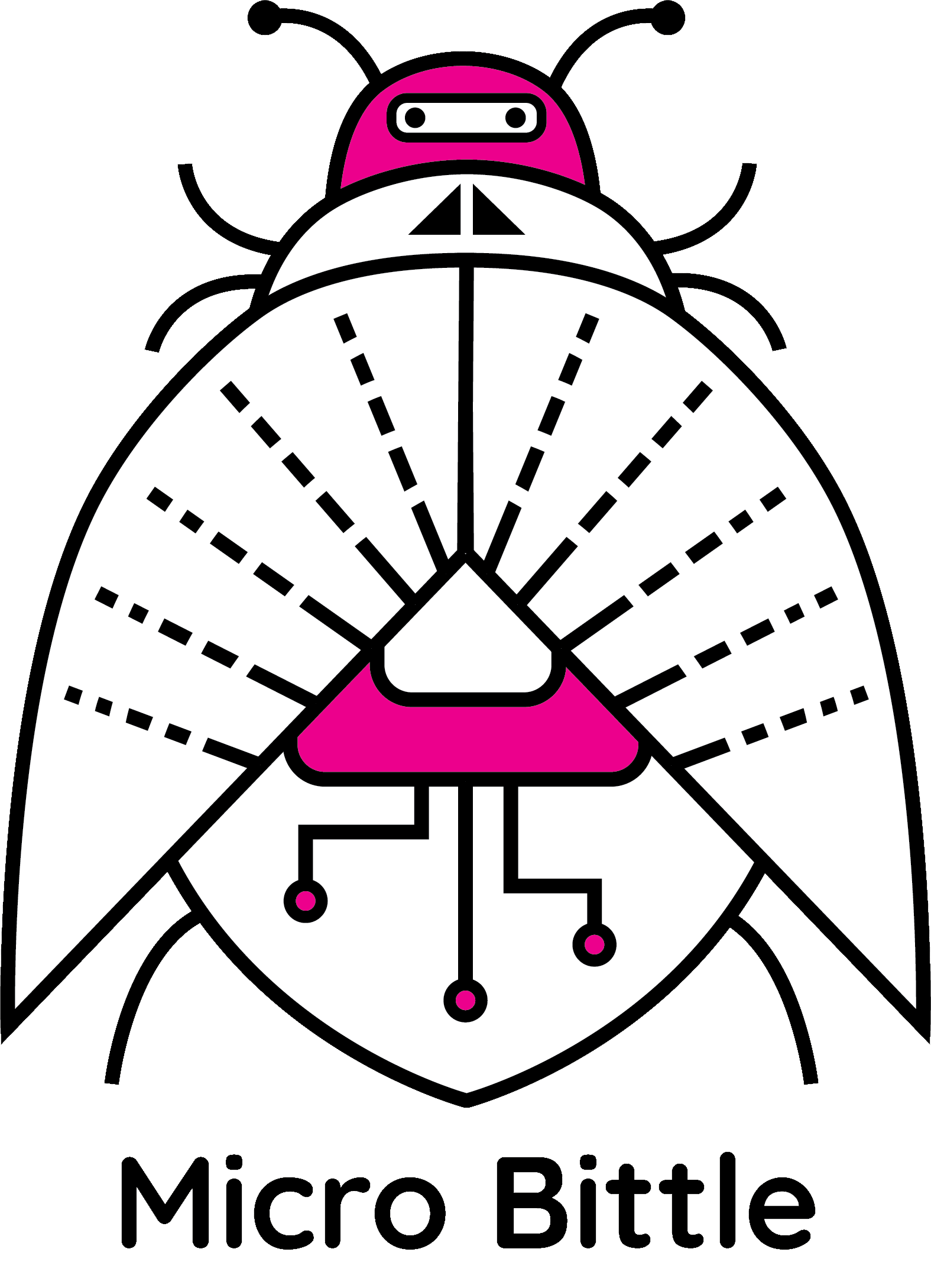Our main focus this week were two playtesting sessions that we were able to schedule with sixth grade classes in schools near Pittsburgh. Our main goal was to allow students to interact with different input and output controlled by micro:bits and see how they interpreted the relationship between them. We also wanted to learn which sensors they found most fun and which they found most complicated or confusing. Finally, we also wanted to playtest the theme of our project, but we didn’t get a chance to do this in neither of the 40-minute sessions.
Playtesting Design
We created 4 “stations” to playtest, each with a micro:bit and different sensors and other forms of input, as well as output.
Stations 1 and 2 had three sensors each and an RGB LED that produced different colors based on the sensor readings. Station 3 had two sensors, one that produced a different number of beats depending on its reading, and another that turned an LED on and off. Finally, station 4 was just a micro:bit, programmed to make sound or turn on its own LEDs based on pressing buttons, microphone input, and tilting.
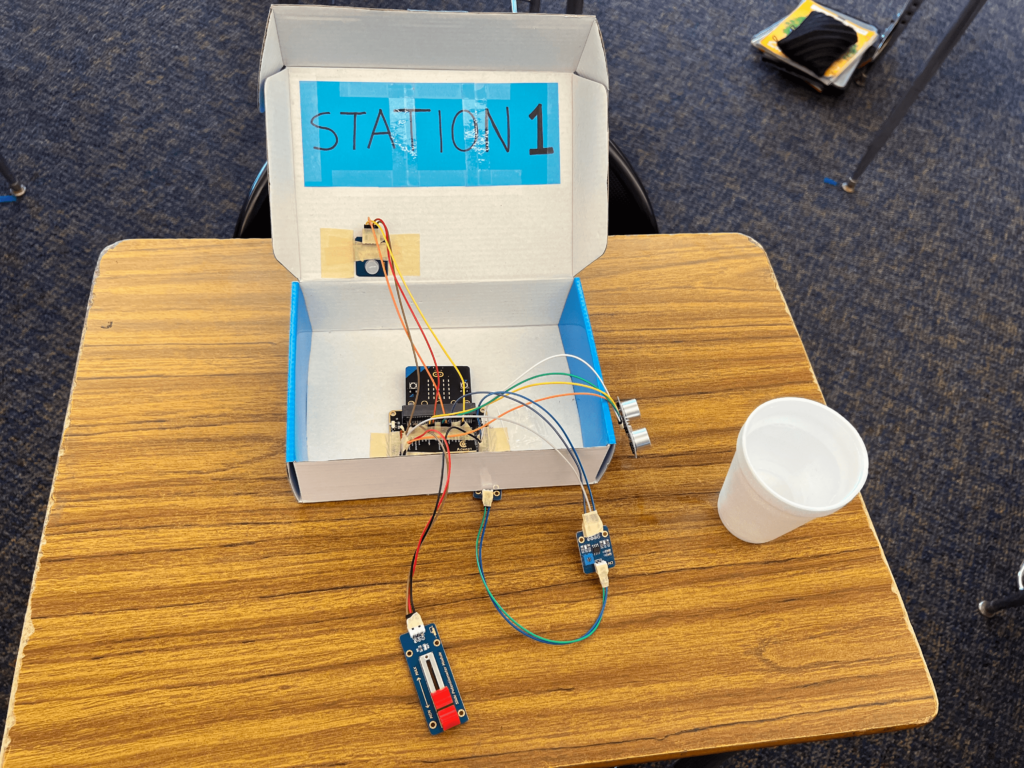
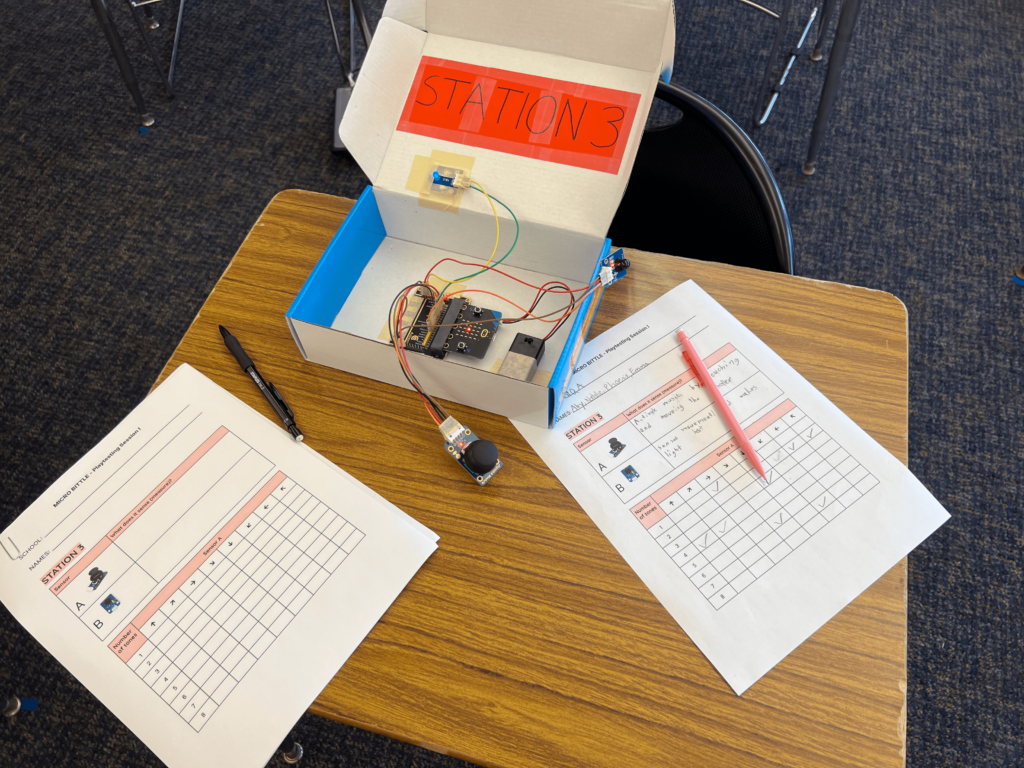
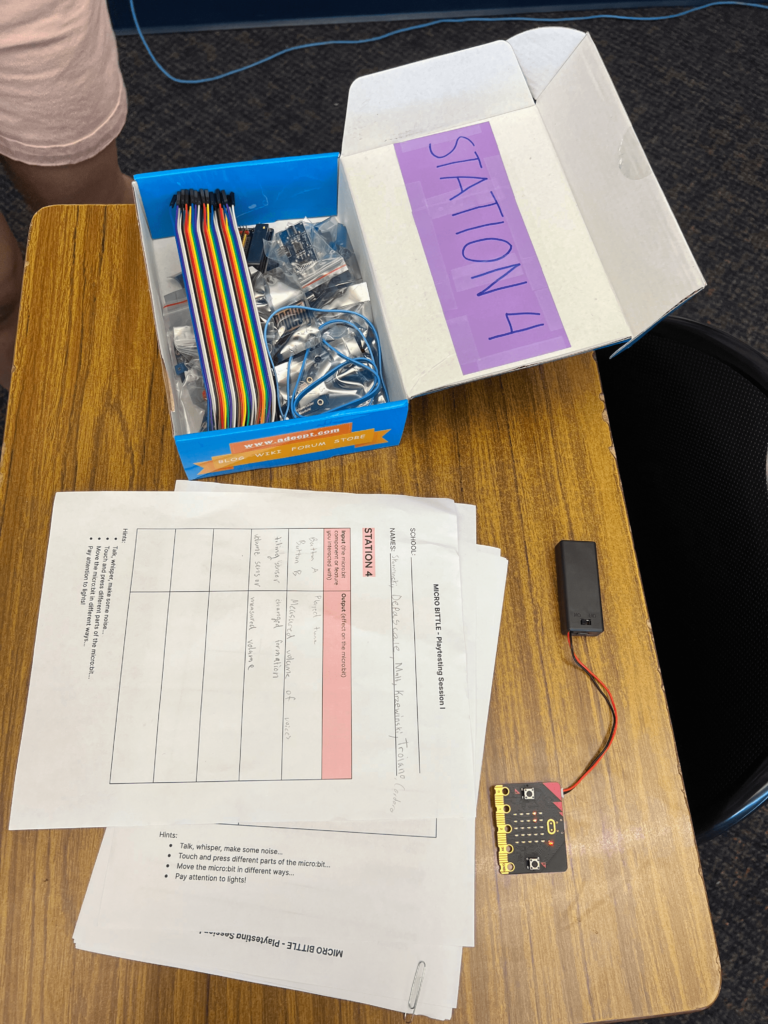
Accompanying these stations were the worksheets below, shown in this case with the “correct” answers to fill them out.
In both schools, we asked the sixth graders’ teacher to help us separate the class into four teams. We asked these teams to rotate through the stations, filling out one worksheet per team, per station.
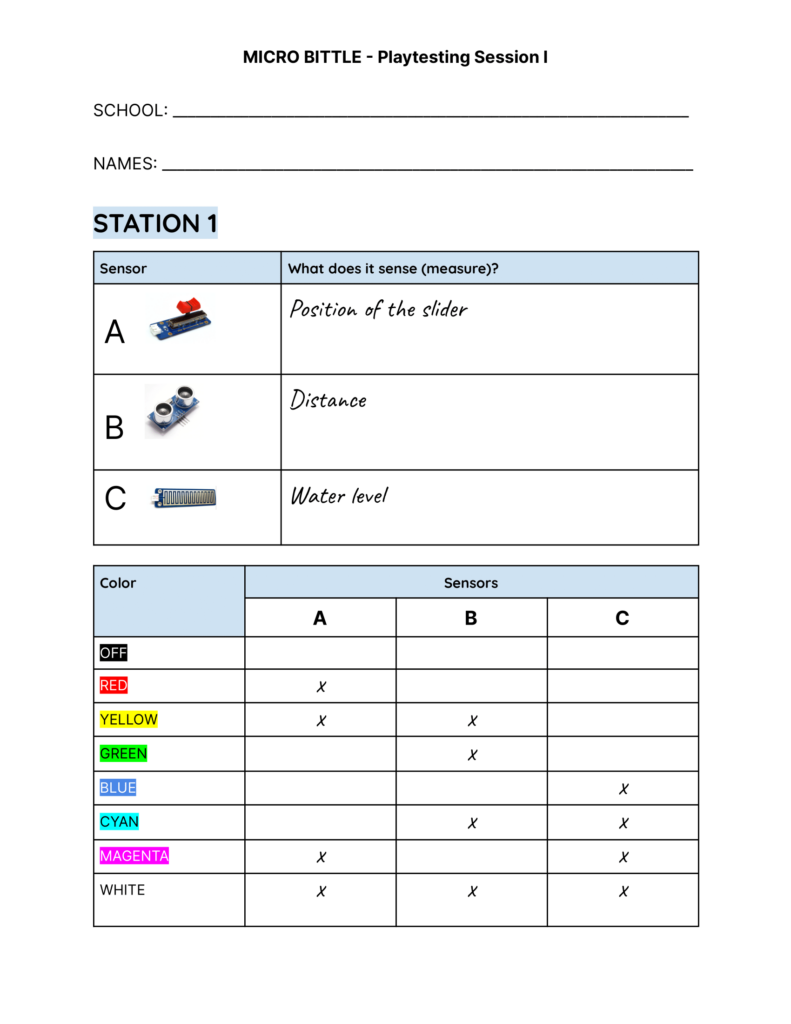

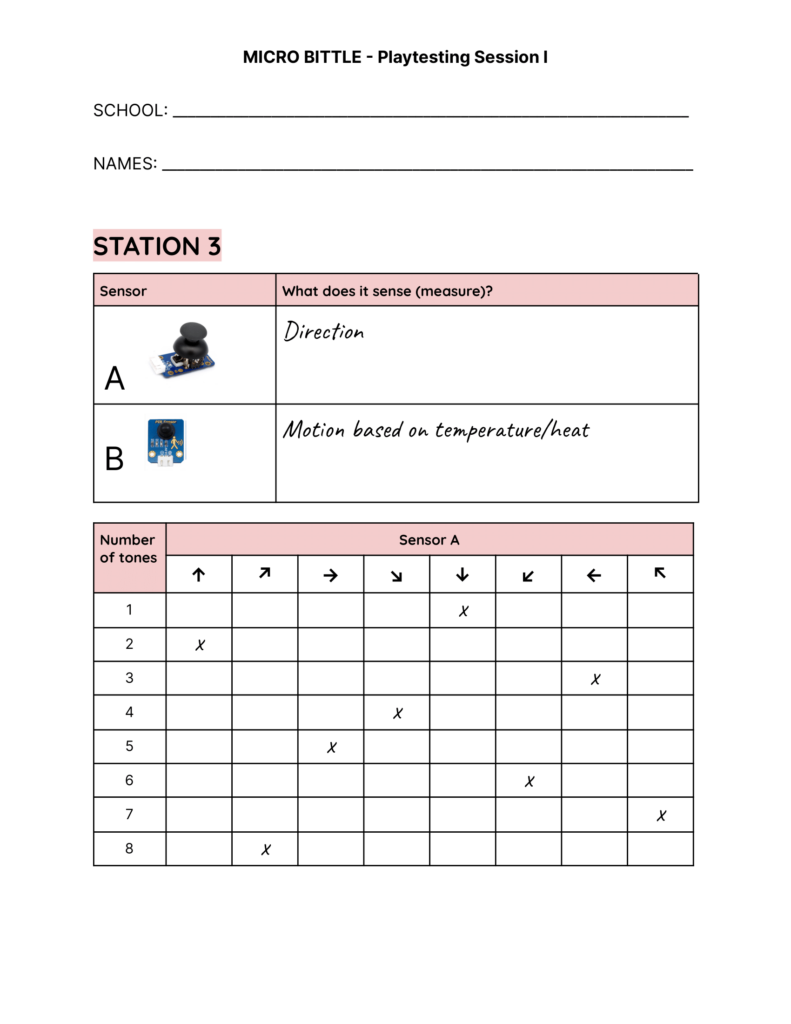
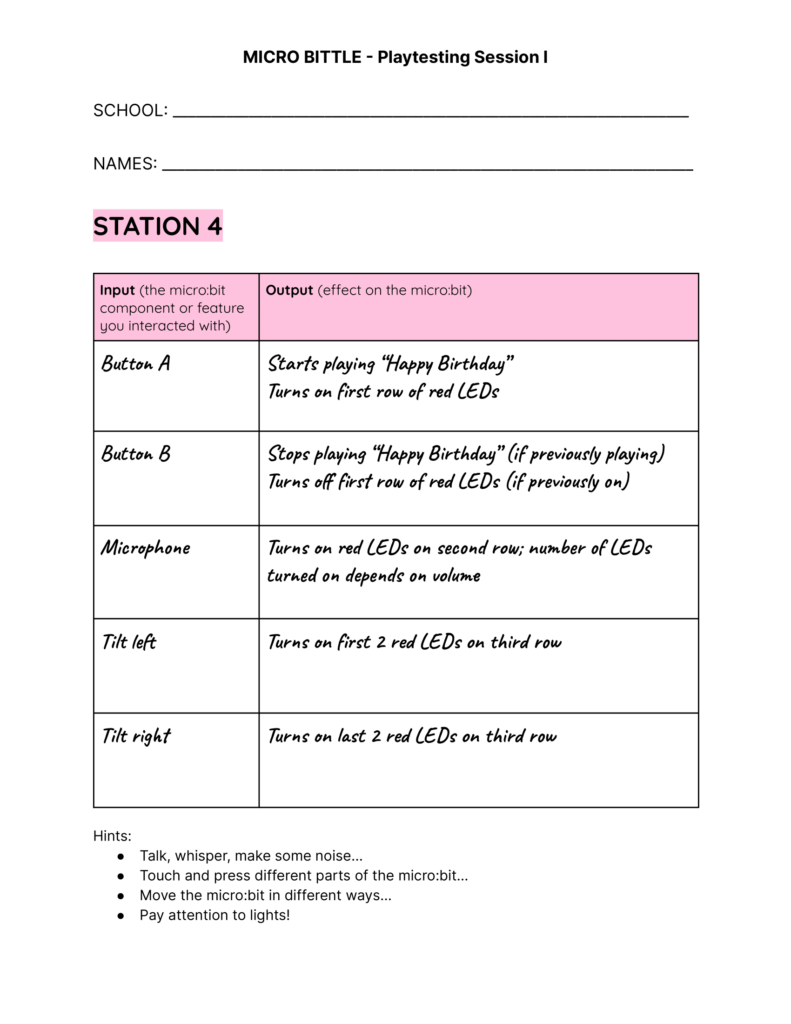
Mary Queen of Apostles School (New Kensington)
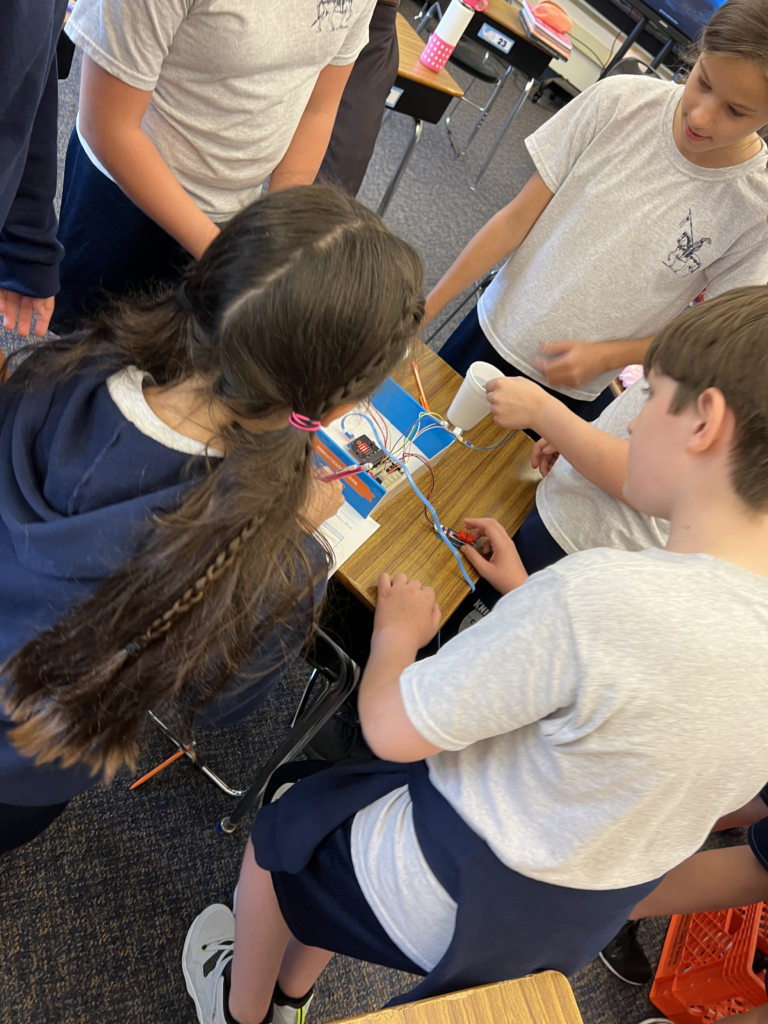
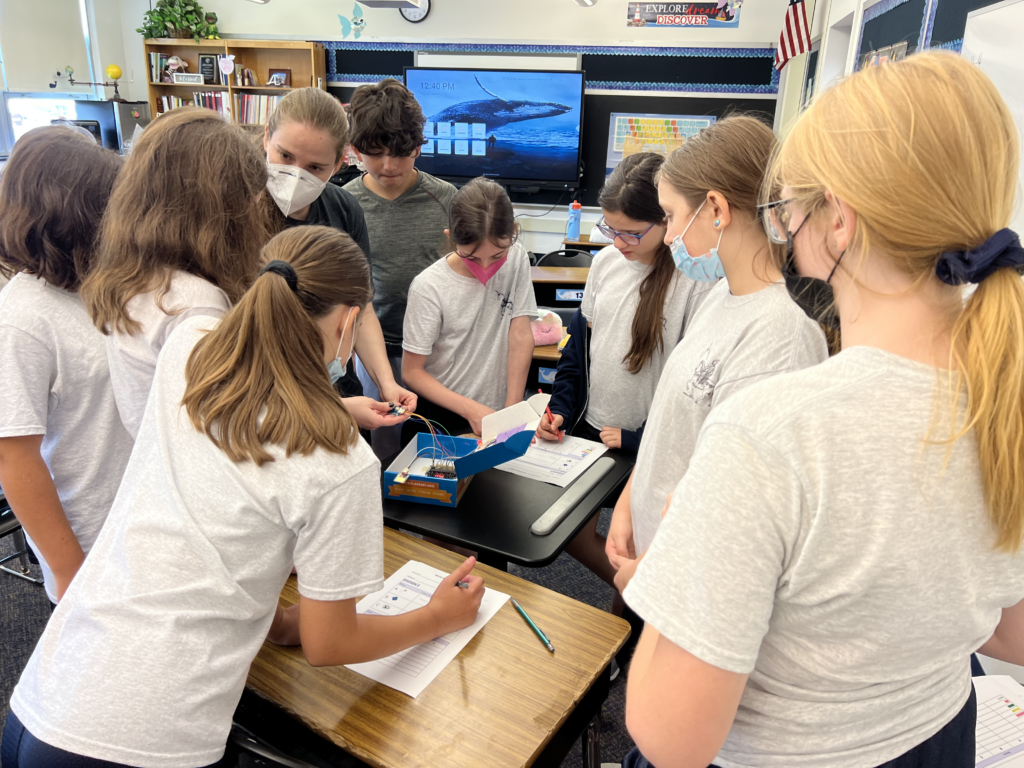
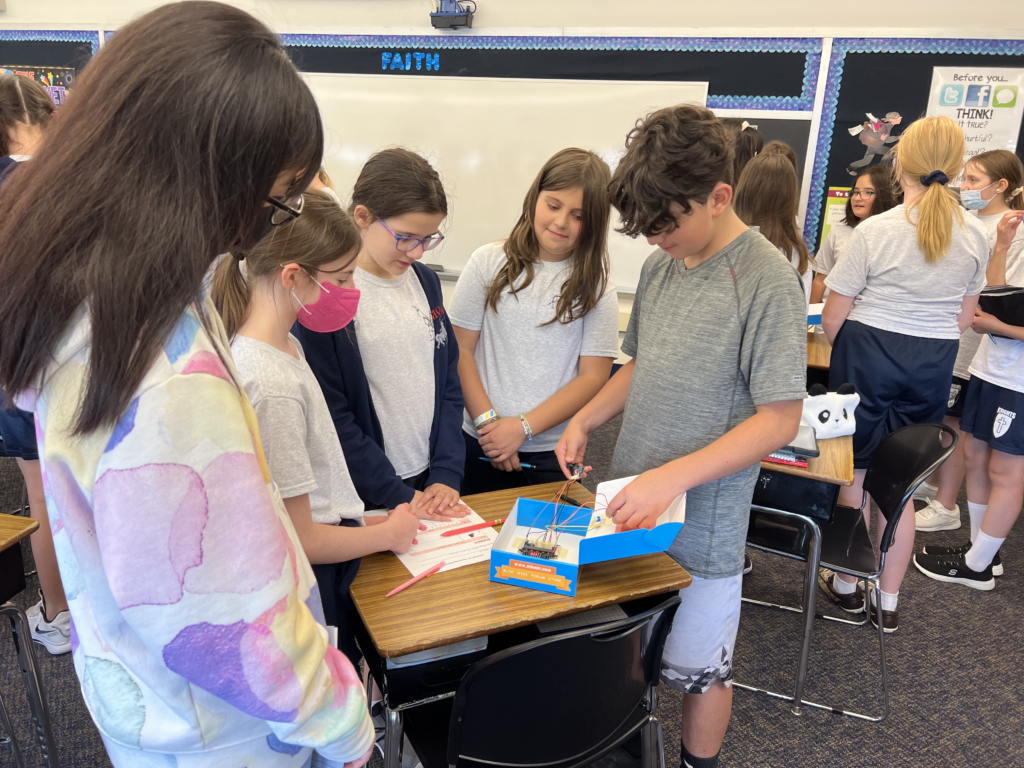
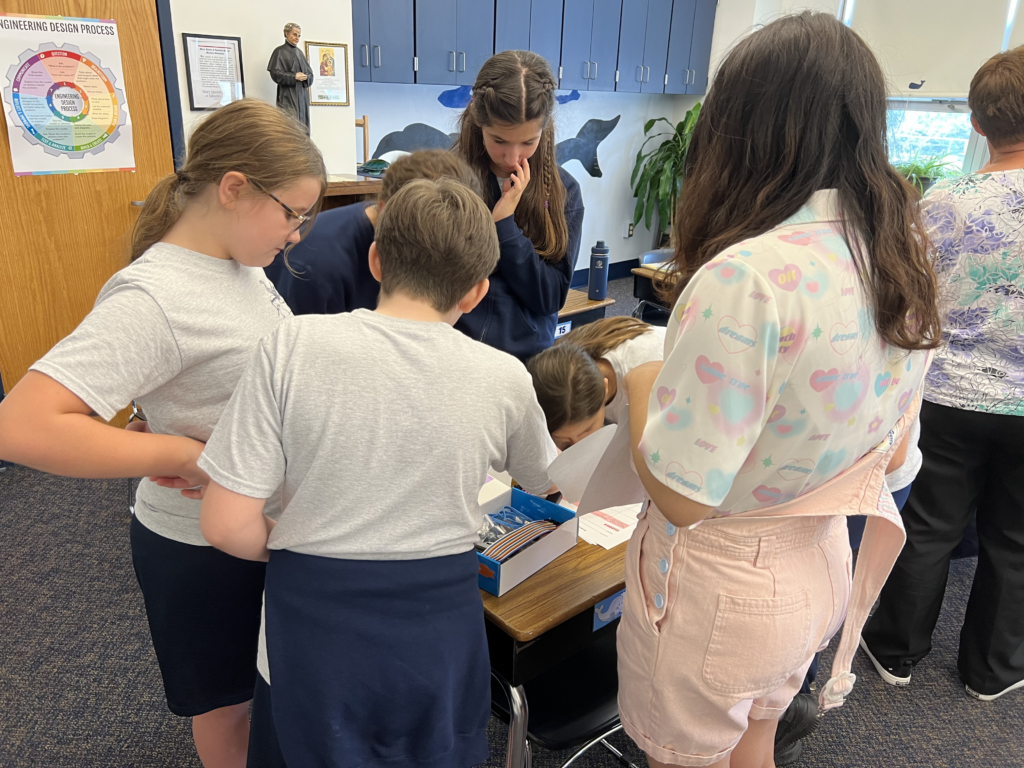
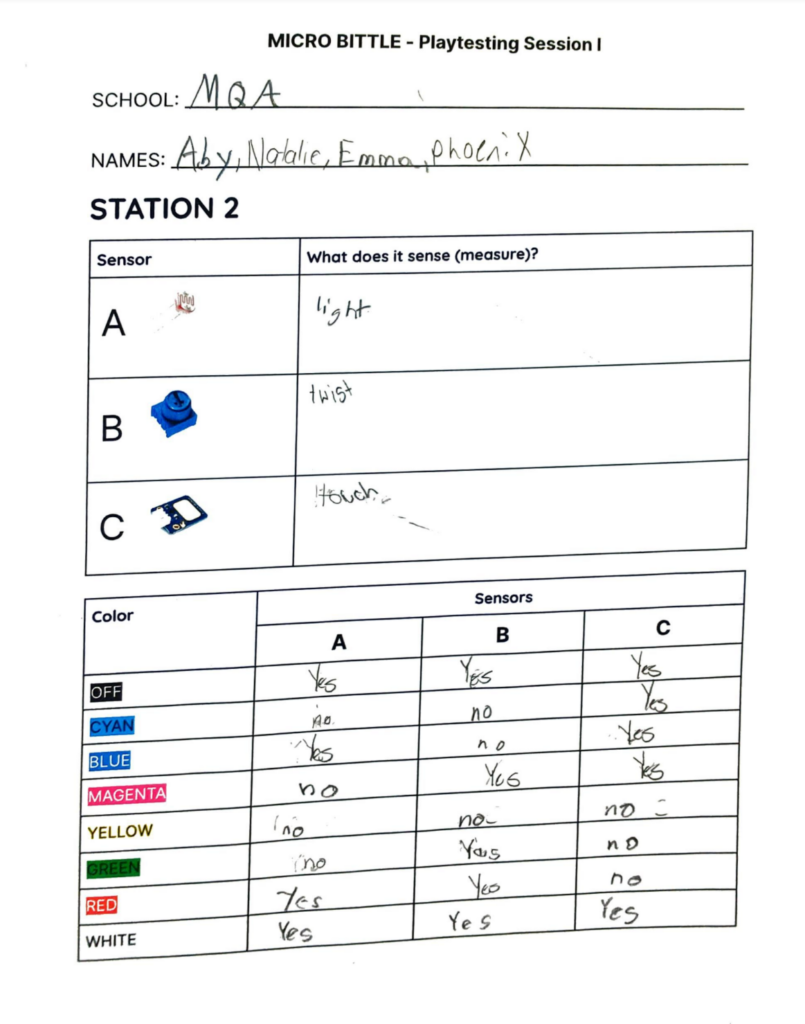
Cornell School (Coraopolis)
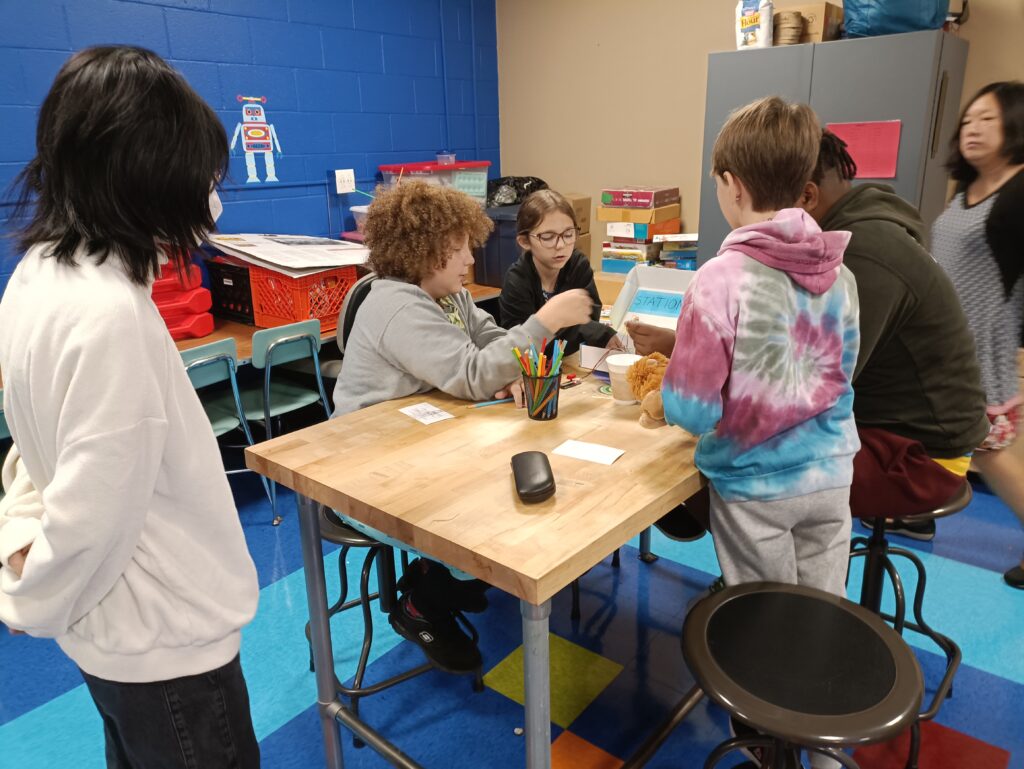
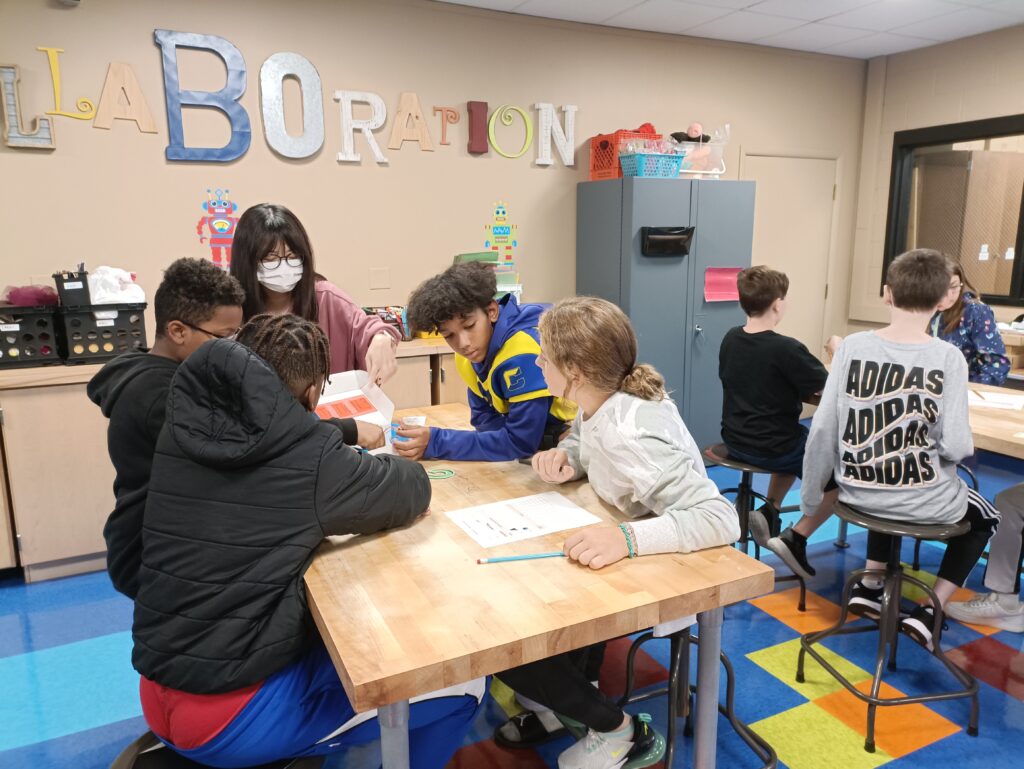
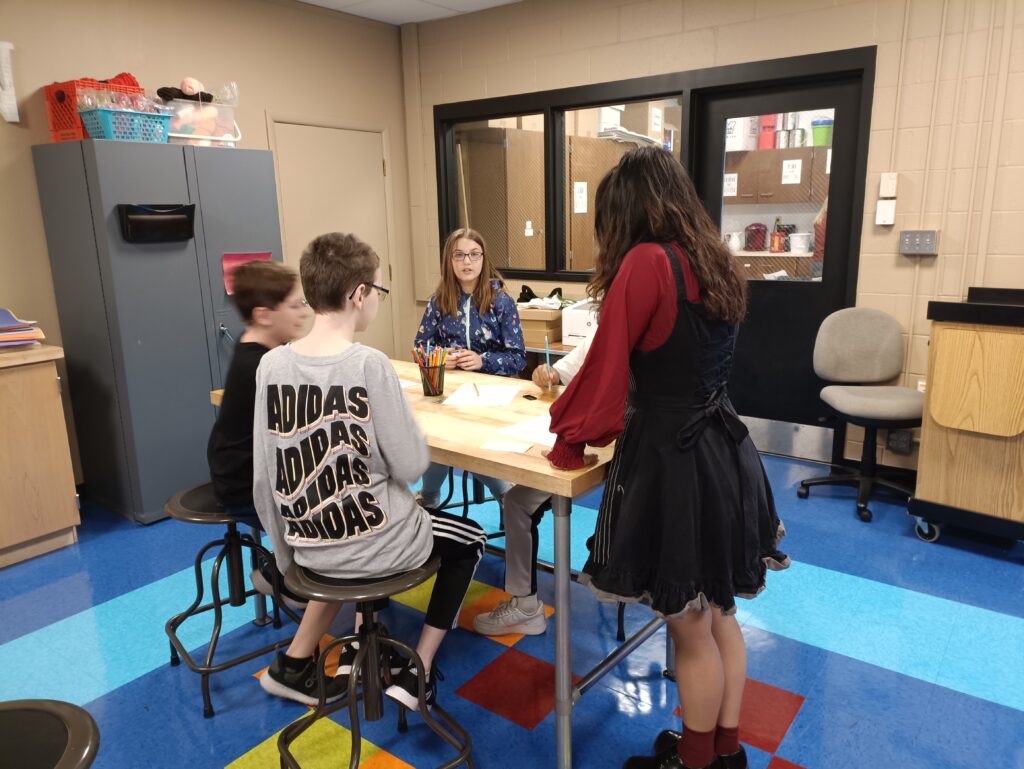
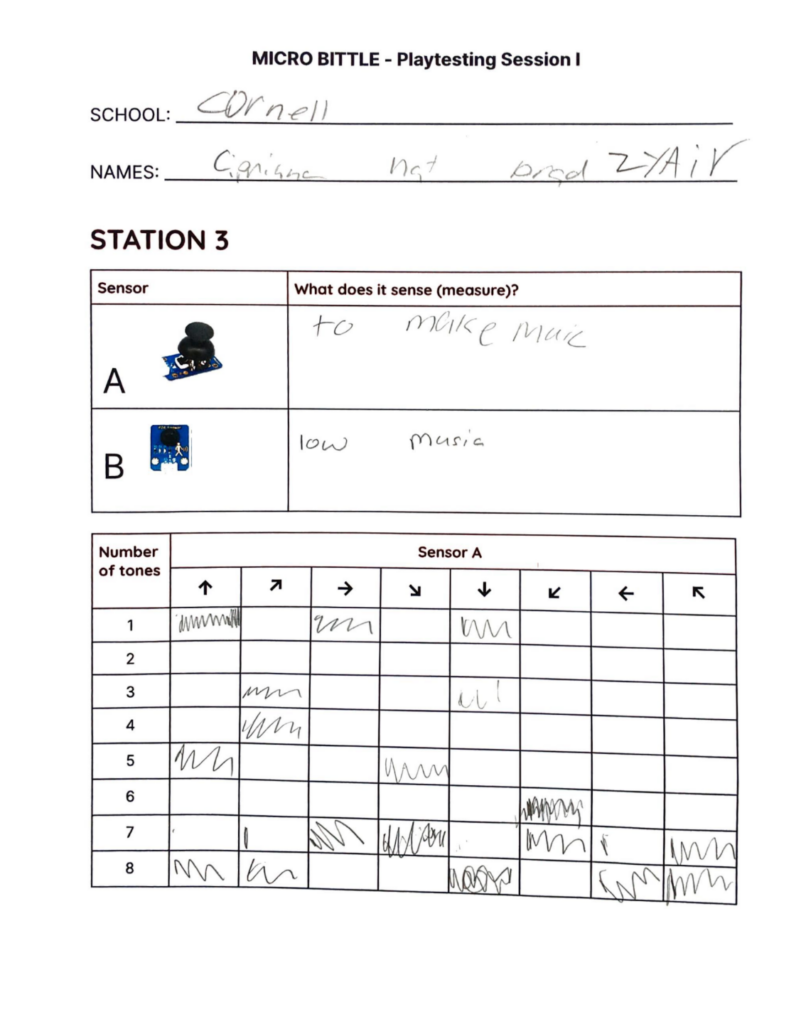
Observations & Takeaways
The following are some observations and takeaways from these playtesting sessions:
Observations from Micro Bittle team:
- Students were confused by these sensors the most:
- PIR sensor
- Photoresistor
- Water level sensor
- Micro:bit microphone
- Micro:bit tilting
- Students enjoyed these sensors the most:
- Photoresistor
- Water level sensor
- Joystick
- Students struggled with the physical use of these sensors the most:
- Joystick
- Photoresistor
- Ultrasonic distance sensor
Observations from students:
- Input/output:
- It was hard to understand which sensor/controller controlled what when everybody was touching them at the same time
- Explanations from facilitators were often needed to understand how the stations worked, but once these explanations were given, students enjoyed working on them
- Though sometimes difficult because of the reasons mentioned above, most students really enjoyed/were excited by the challenge of mapping sensors/controllers to colors and sounds
- Students preferred the stations where feedback was most immediate, and they preferred the stations were sensors/controllers were most interactive (active use of input rather than passive)
- In general, students enjoyed the use of color and sound as output
- Teamwork:
- Students were frustrated and struggled when team did not communicate and strategize about which sensors/controller to test for each form of output
- Some students lost interest in the midst of this confusion
- However, teams that managed to strategize and communicate effectively, either on their own or with help from a facilitator, were able to navigate the puzzles and reported enjoying them
- A few students highlighted the role of teamwork in their experience and how much they enjoyed working together with their teammates to solve the puzzles
- A student highlighted how everyone in their team was able to contribute to the activity, “even by just being quiet” in relation to Station 4 with the microphone as input
- Technology:
- MQA students had never used micro:bits, most Cornell students had used them in previous projects
- Students enjoyed learning about the many things a micro:bit can do (its different features)
- Students understood the importance of precision in using the input devices to obtain desired output
- A student highlighted the need to be observant when mapping input to output
- A student highlighted how the activity sparked their interest in programming – they were wondering how the Micro Bittle team programmed the micro:bits to create all these stations and were interested in learning more about this
- A student highlighted their desire to learn more about sensors, given they were interested in the variety that was presented in the stations
- Students knew how to fix minor problems(*) by themselves because they experienced more technologies already
Main Takeaways
With more guidance regarding how each sensor/controller works and how to use them, the following forms of input could be the most convenient, easy-to-use, and engaging for students in our final experience:
- Photoresistor (used with a “covering”, not handled by hand to block the light)
- Water level sensor
- Slider potentiometer
- Knob potentiometer
- Joystick
- Touch button
In terms of output, the RGB LED was very successful as an addition to the output capacities of the micro:bit board.
Teamwork was a highlight of the playtesting sessions, which was fantastic, but it definitely needs to be more guided in our final experience.
Our final experience needs to give clear guidance on how external input and output are wired, and how to troubleshoot common physical computing issues.
